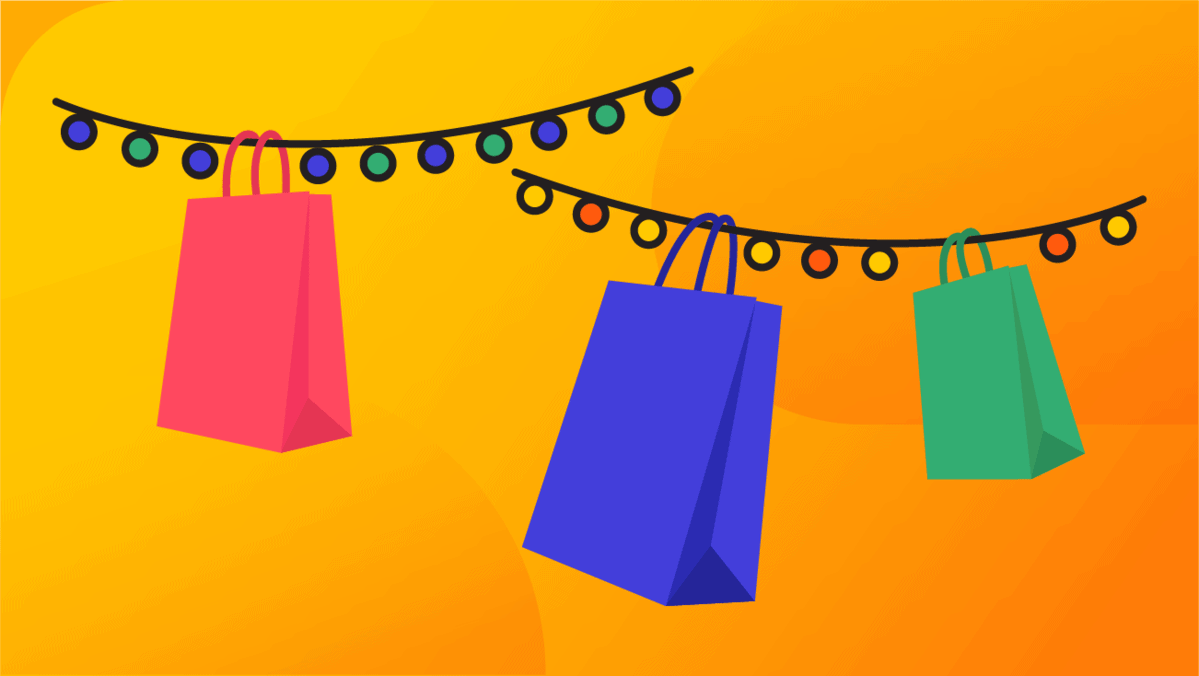By Katrina Radke
Peak Season – It’s the most wonderful time of the year (is that how the song goes?) – and for retailers, it usually falls between November and December. For this next peak season, we’ve come up with six things you need to do to increase your profits for 2021. So without further ado, let’s take a look.
Table of Contents
- Learn from last year
- Personalise, Personalise, Personalise
- Cross-sell, upsell, and create special offers
- Use Discovery Shopping to your advantage
- Automation
- Incorporate product-level data
Learn from last year
History repeats itself. The first step toward having an awesome peak season this year is to look at how things went last year, and the best way to do that is through data.
We know that there’s been a global shift toward online shopping since the pandemic began. In 2020, over 80 percent of consumers worldwide shopped online. What’s important now is that we take advantage of and optimise this new shopping trend.
There are a few ways to use your data from last year to improve this year’s peak season performance:
- Channels: Look at which channels were the most profitable and focus your advertising there (Social media took the crown in the UK for online advertising in 2020).
- Devices: Where are your customers shopping from? Hint: Mobile commerce sales have increased globally by 40% since 2017. There are a few ways you can optimise your offering to be better compatible with mobile devices, such as increasing your website’s speed to have faster loading times, creating a bold, thumb-friendly CTA (call to action) button, and avoiding forcing shoppers to register at check out.
- Products: Which products performed the best? What were your bestsellers and your low performers per channel? There’s a good chance you don’t know your top performers across channels, and this data is crucial to scaling.
With product-level cross-channel data, you can determine the performance of each product rather than just overall campaign performance. ROI Hunter works as the perfect solution to find granular product-level data across channels by combining your native and custom integrations into one holistic source of truth. From this, you can analyse your product-level data to exclude low-performing products, and build campaigns around your best-selling ones.
By taking last year’s data into account, you can improve what you promote, where you promote it, and how.
2. Personalise, Personalise, Personalise
People, it is so so so (yes, I used so three times in a row, I’m trying to emphasise this) important to personalise your ads and overall shopping experience for your customers.
However, personalisation is becoming harder as policies are rolled into place to protect users’ privacy. Pixels are becoming less reliable and platforms are losing invaluable signals needed to ensure that they deliver the ads that are most relevant to users.
In response, some platforms have launched their own solution, such as Facebook’s CAPI (Conversions API), to include signals from their users in an effort to maintain and improve ad personalisation. Since relevant ads increase engagement, and 80% of shoppers are more likely to buy from businesses that offer personalised experiences, it’s essential to stay on top of these changes, so that you can continue to create a delightful and personalised shopping experience for your customers (and save money on ads).
3. Cross-sell, upsell, and create special offers
Here are a few essential and easy profit boosters you can put together in time for peak season.
- Cross-selling: When a beloved customer drops something into their online shopping cart, you can politely suggest other items that are relevant to the product. Some ideas include bestsellers, “shop the look,” related, etc.
- Upselling: When a customer pops something into their basket, you can recommend a newer or better version of the product at a higher price, hence upselling
- Special offers: Some examples include free shipping, discounts when you spend over a certain amount (e.g. $25 off $100 purchase), limited time only deals, or any other way you’d like to get creative here. Bundles, or complementary products grouped to be purchased together, are another great idea.
4. Use Discovery Shopping to your advantage
Have you heard of Discovery Shopping? If not, now’s the time, because both Google and Facebook platforms are leading the helm in their own (very similar) ways.
Discovery Shopping is related to the vital need to personalise the online shopping experience. Basically it puts the buyer in an always-shopping mode and connects the perfect products with the people who will likely love them based upon their online behaviour before the customer begins looking for them.
Google calls this Discovery Ads while Facebook calls it Discovery Commerce. And I’m not trying to be overly dramatic here, but you need to be taking advantage of this, because it’ll truly take your advertising to the next level. For more information on how to enhance Discovery for your business, read this article.
5. Automation
Automation is key to improving your peak season profits this year. According to Entrepreneur, 78% of marketers say automation increases revenue, while 75% of companies using automation see ROI (return on investment) in less than a year. So if you’re not optimising your campaigns and business through automation, please do.
A great way to take advantage of automation is through ROI Hunter’s TEDI, a photoshop-style template editor that makes it easy to create beautifully branded dynamic promotions without a graphic designer. TEDI with conditions enables you to automate badges for templates, such as a “Sale” badge that gets triggered when there’s a sale price lower than the standard price or a “Bestseller” badge that gets triggered when an item falls in the top 10% of sales.
6. Incorporate product-level data
I’ve mentioned how to find product-level data; here’s how you can use that data to enhance your dynamic ads.
Dynamic ads automatically promote something from your catalog, relying on social algorithms to select which product to promote. By integrating product-level performance data from across your channels, you gain visibility into which products are your winners/losers.
With this performance data, you can filter your catalog by specific metrics to create separate product sets based around your company goals (high margin products to increase profitability, best-selling products to increase number of transactions, etc.), allowing you to take control of your dynamic promotions.
Once you’ve aligned your departments around this integrated source of cross-channel data, your purchasing department will have insight into actual marketing performance, greatly increasing the efficacy of demand forecasting.
Final Thoughts
There it is. To increase your profits during peak season, it’s essential to take note of last year’s peak season performance, personalise your ads, and profit boost through cross-selling, upselling, and special offers.
Discovery shopping, automation, and incorporating product-level data will also give you that extra push to further improve your profits this peak season. For more in-depth Black Friday/peak season planning, our Black Friday e-book offers tips along with unique predictions for 2021’s Black Friday in the Wake of COVID-19.






